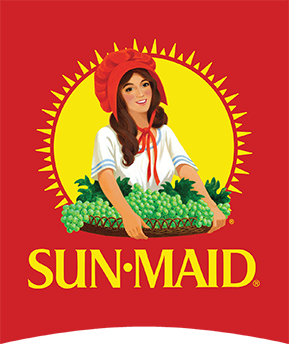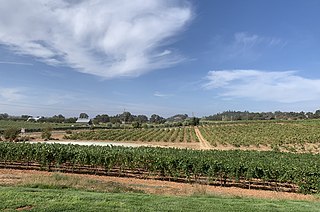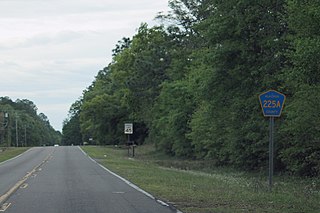
Livingston is a city in Merced County, California, United States. Livingston is located 7 miles (11 km) west-northwest of Atwater, at an elevation of 131 feet (40 m). According to the 2020 census, the city population was 14,172, up from 13,058 in 2010. Livingston's total area is 3.7 square miles (9.6 km2), including undeveloped farmland annexed in anticipation of future growth.

New World wines are those wines produced outside the traditional winegrowing areas of Europe and the Middle East, in particular from Argentina, Australia, Brazil, Canada, Chile, Japan, Mexico, New Zealand, South Africa and the United States. The phrase connotes a distinction between these "New World" wines and those wines produced in "Old World" countries with a long-established history of wine production, essentially in Europe and the Middle East, most notably: France, Italy, Spain, Portugal, Germany, Israel, Denmark, Romania, Georgia, the Netherlands, Norway and Switzerland.

Sun-Maid Growers of California is an American farmer-owned cooperative of raisin growers headquartered in Fresno, California. Sun-Maid is one of the largest raisin and dried fruit processors in the world. As a cooperative, Sun-Maid is made up of approximately 850 family farmers who grow raisin grapes within a 100-mile (160-kilometer) radius of the processing plant. Sun-Maid also sources dried fruit beyond this geographical area.

Girdling, also called ring-barking, is the circumferential removal or injury of the bark of a branch or trunk of a woody plant. Girdling prevents the tree from sending nutrients from its foliage to its roots, resulting in the death of the tree over time, and it can also prevent flow of nutrients in the other direction depending on how much of the xylem is removed. A branch completely girdled will fail; and, when the main trunk of a tree is girdled, the entire tree will die if it cannot regrow from above to bridge the wound. Human practices of girdling include forestry, horticulture, and vandalism. Foresters use the practice of girdling to thin forests. Extensive cankers caused by certain fungi, bacteria or viruses can girdle a trunk or limb. Animals such as rodents will girdle trees by feeding on outer bark, often during winter under snow. Girdling can also be caused by herbivorous mammals feeding on plant bark and by birds and insects, both of which can effectively girdle a tree by boring rows of adjacent holes.

The Valle de Guadalupe is an agricultural region in the Ensenada Municipality, Baja California, Mexico that produces an estimated 70 percent of Mexican wine. In recent years, it has become a popular tourist destination for wine and Baja Med cuisine.

Uvas Canyon County Park is a 1,147-acre (464 ha) natural park located in upper Uvas Canyon on the eastern side of the Santa Cruz Mountains, west of Morgan Hill, California. The park has several small waterfalls, some of which flow perennially, that feed into tributaries confluent with Uvas Creek. The park is part of the Santa Clara County Parks System, and facilitates picnics, hiking and overnight camping. It is one of the few parks in the area that allows dogs in the campgrounds.
The Yamato Colony was an attempt to create a community of Japanese farmers in what is now Boca Raton, Florida, early in the 20th century. With encouragement from Florida authorities, young Japanese men were recruited to farm in the colony. There were as many as 75 Japanese men, some with their families, at the peak. There was "a cluster of two-story frame houses, a general store..., some packing houses."

The Indiana Colony is the name of the cooperative who originally settled in the area known today as Pasadena, California, United States, as well as their first name for the area they settled. The group was incorporated on January 31, 1874, by Indiana residents seeking warmer weather after the exceptionally cold winter of 1872–73. The settlers met in the home of Thomas Elliott, and Daniel Berry was selected to visit Southern California with a direction to find suitable land at a suitable price.
Carmel Winery is a vineyard and winery in Israel. Founded in 1882 by Edmond James de Rothschild, its products are exported to over 40 countries. It is the largest winery in Israel, with a local market share of almost 50%.

Clarion is a ghost town in Sanpete County, Utah, United States, 5 miles (8.0 km) southwest of Gunnison. Clarion was the site of an early-twentieth century experiment in Jewish rural living. The Clarion site totaled 6,085 acres, and was five miles from north to south along the Sevier River and 3 miles (4.8 km) wide. The area today is in the Centerfield, Utah postal district.

The Vine and Olive Colony was an effort by a group of French Bonapartists who, fearing for their lives after the fall of Napoleon Bonaparte and the Bourbon Restoration, attempted to establish an agricultural settlement growing wine grapes and olive trees in the Alabama wilderness. The area that they settled later became the counties of Marengo and Hale.

California Shenandoah Valley is an American Viticultural Area (AVA) located within portions of Amador County and El Dorado County, California. The area was established on January 27, 1983 by the Bureau of Alcohol, Tobacco, Firearms and Explosives (ATF), Treasury after approving the petition from the Amador County Wine Grape Growers Association proposing a viticultural area in Amador County, California, to be known as "Shenandoah Valley." It lies within the vast multi-county Sierra Foothills viticultural area boundaries and borders the northwest boundary of Fiddletown viticultural area which received recognition later the same year. In the petition, the area consists of approximately 10,000 acres (16 sq mi) with about1,200 acres (486 ha) under vine. The petition requested ATF for the Shenandoah Valley viticultural area to be situated to the north and west of Fiddletown, and to the north and east of Plymouth.

Agriculture in Cyprus constituted the backbone of its economy when it achieved its independence in 1960. It mostly consisted of small farms, and sometimes even subsistence farms. During the 1960s, irrigation projects made possible vegetable and fruit exports; increasingly commercialized farming was able to meet the demands for meat, dairy products, and wine from the British and United Nations troops stationed on the island and from the growing number of tourists.
Cortez is an unincorporated community in Merced County, California. It is located on the Atchison, Topeka and Santa Fe Railroad 11.5 miles (19 km) northwest of Atwater, at an elevation of 141 feet.

Doros is a village in the Limassol District of Cyprus, located 1 km north of Monagri.

Silkville is a ghost town in Williamsburg Township, Franklin County, Kansas, United States. It was located approximately 2 miles southwest of Williamsburg at the intersection of U.S. 50 highway and Arkansas Road.
Kyutaro Abiko was a Japanese-born American businessman and newspaper editor.

In 1935, the Federal Emergency Relief Administration created an experimental farming community known as the Matanuska Valley Colony as part of the New Deal resettlement plan. Situated in the Matanuska Valley, about 45 miles northeast of Anchorage, Alaska, the colony was settled by 203 families from Minnesota, Wisconsin and Michigan. The colony project cost about $5,000,000 and, after five years, over half of the original colonists had left the valley. By 1965, only 20 of the first families were still farming the valley.
Wood Colony is an unincorporated area in Stanislaus County, California, United States, located to the west of Modesto. It has been designated as a "Community of Interest" by Stanislaus County's Local Area Formation Commission (LAFCO).

Fairbanks is an unincorporated community in Alachua County, Florida, United States. It is located along Florida State Road 24 between Gainesville and Waldo.















